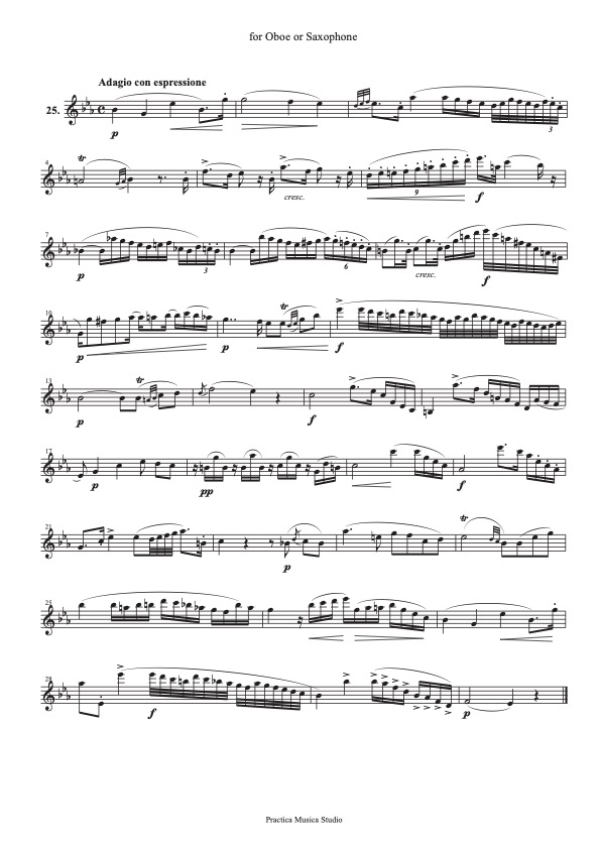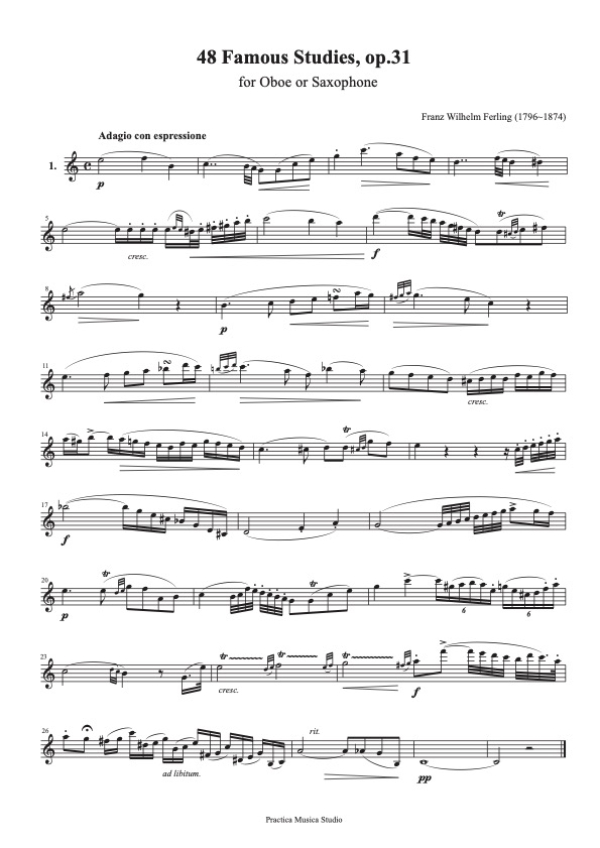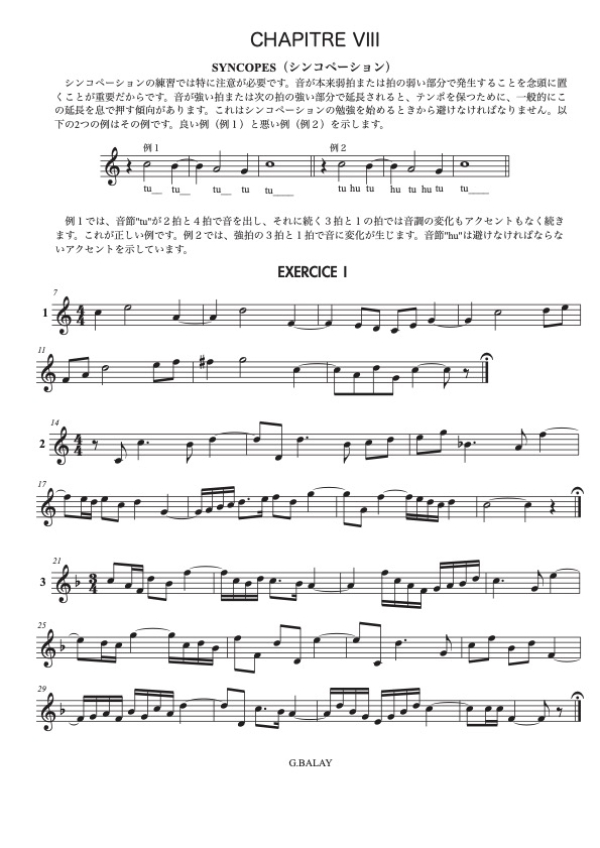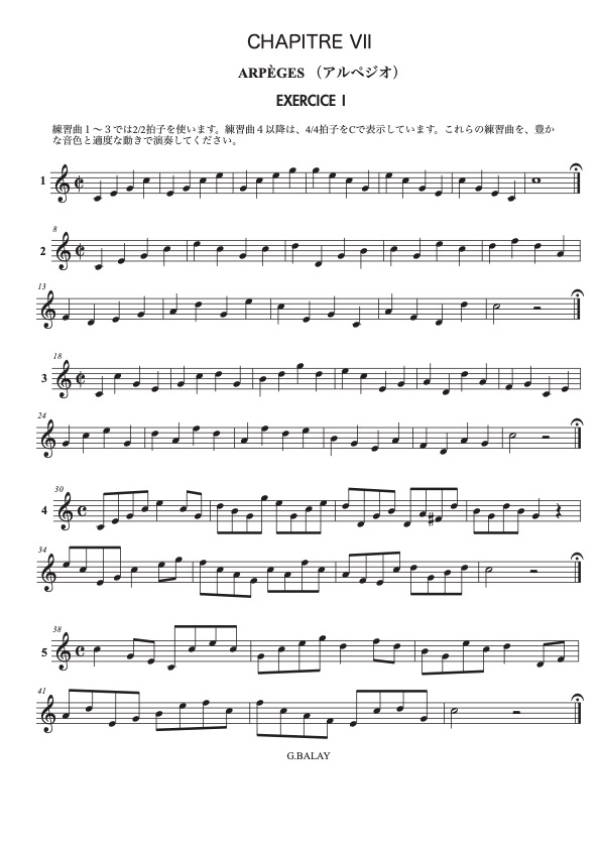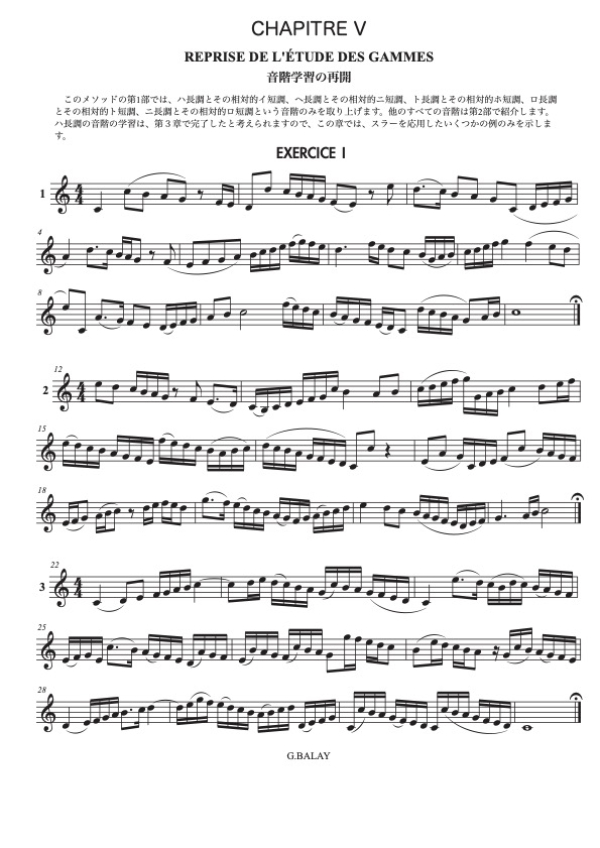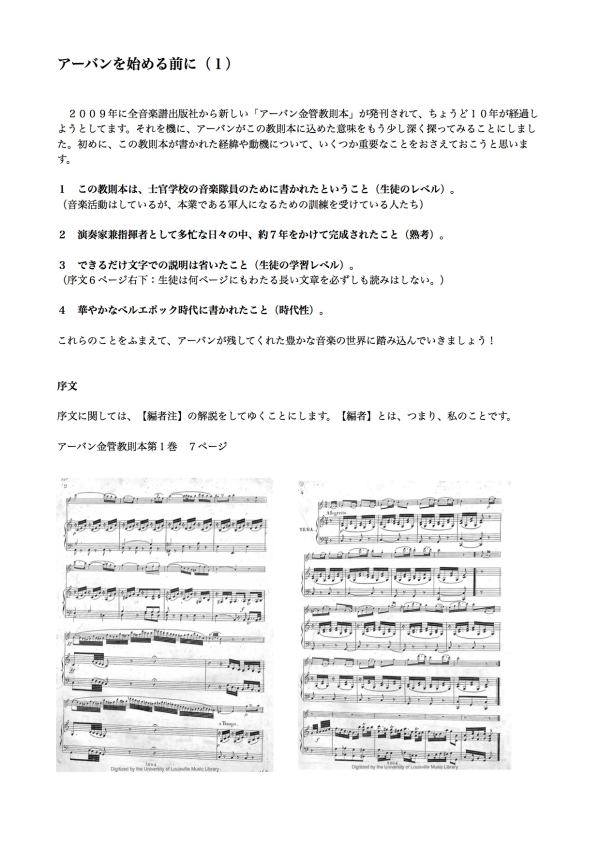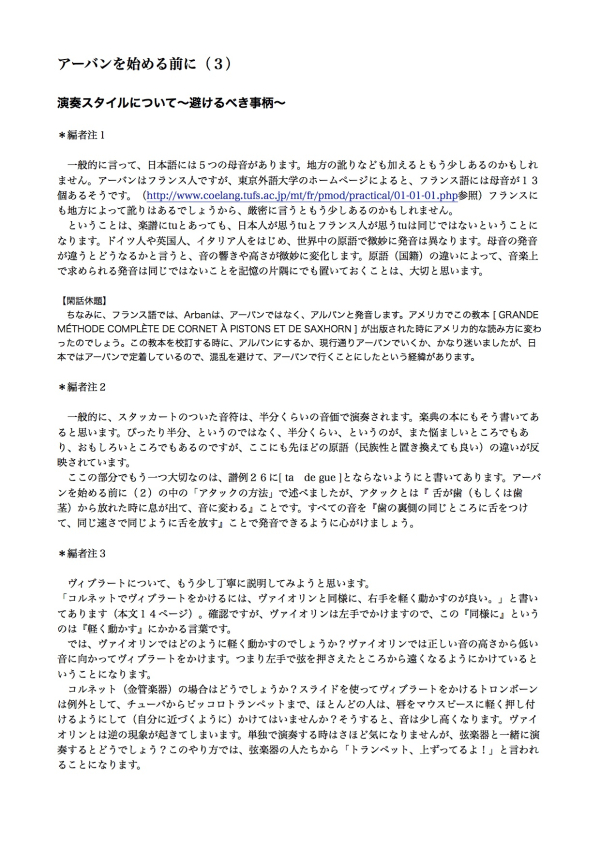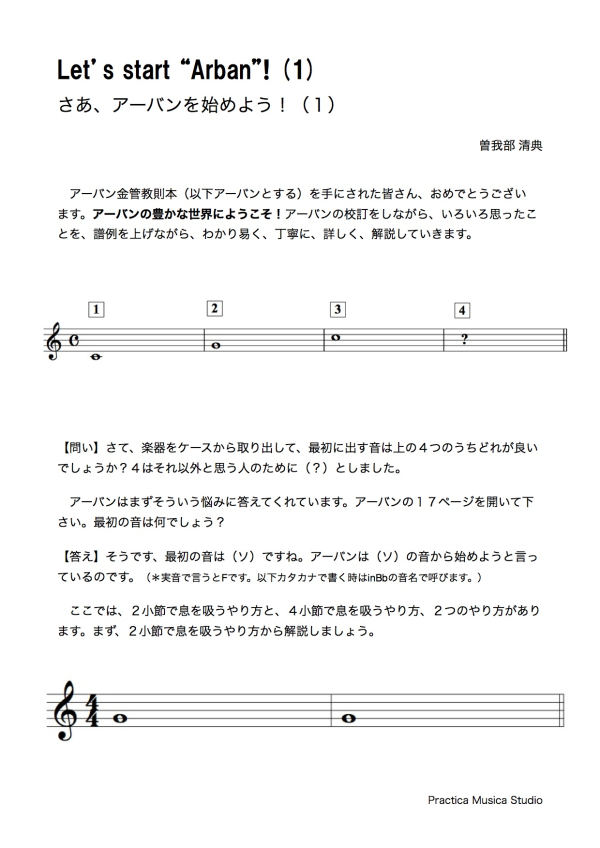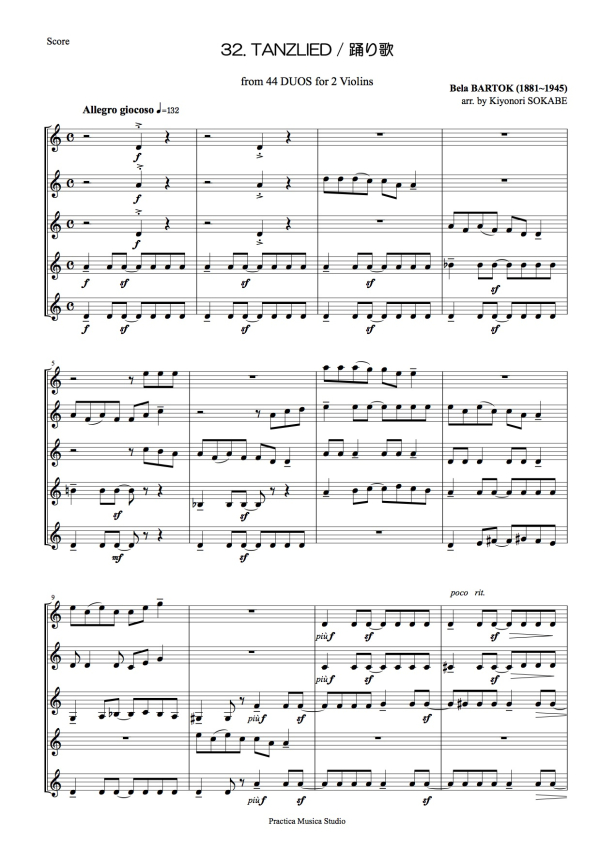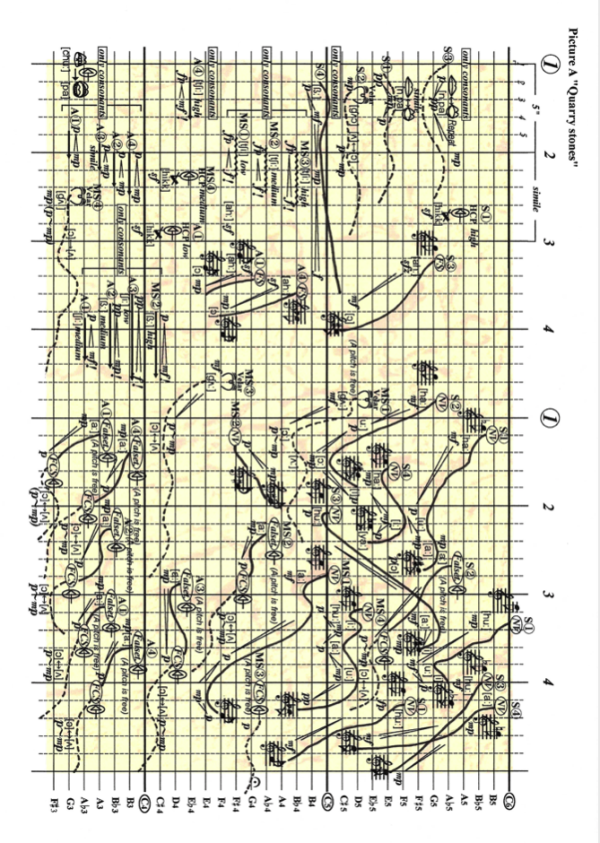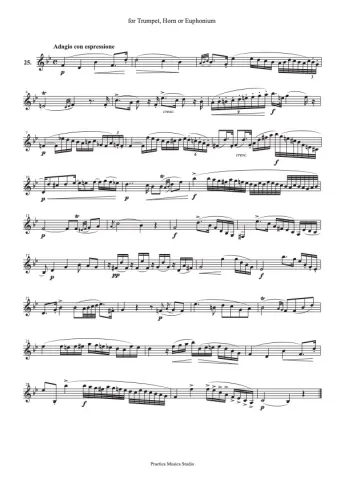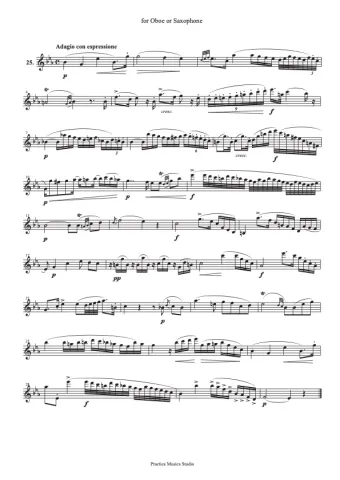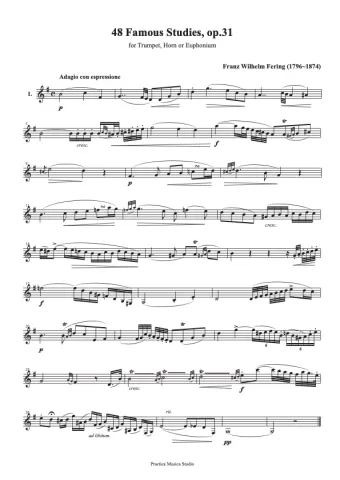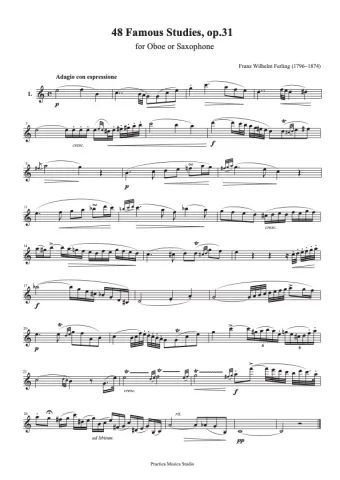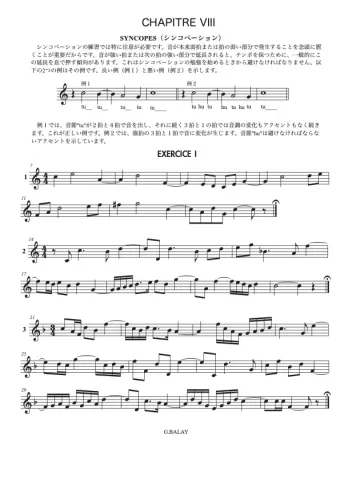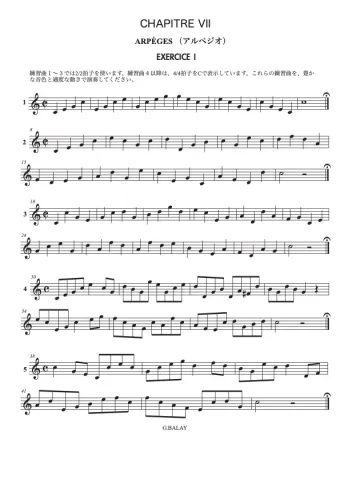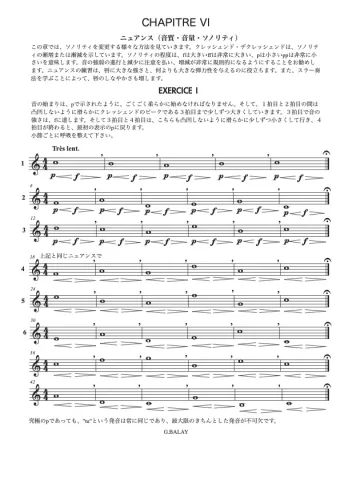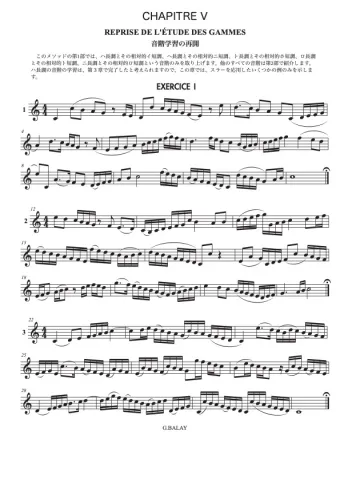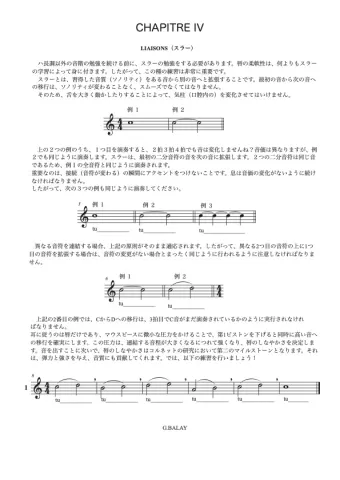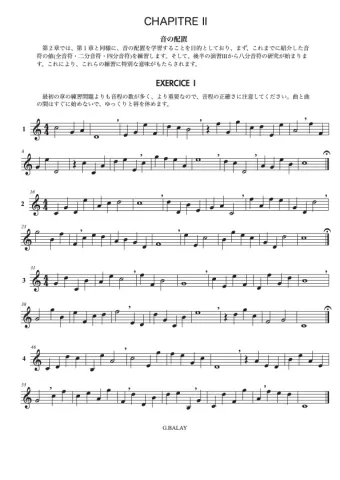New Releases
Our Staff Picks
News
48 ETUDES vol.2 for Brass instruments
FERLING, Franz Wilhelm (arr. SOKABE, Kiyonori)フランツ・ヴィルヘルム・フェルリング(arr. 曽我部清典)
ドイツのオーボエ奏者・作曲家・クラリネット奏者であったF・W・フェルリングの48曲からなる練習曲集の後半24曲です。元々はオーボエのために書かれました。現在では、サキソフォンの重要な練習課題として多くのサキソフォン奏者によって演奏されていますが、それは後に、サキソフォン奏者のマルセル・ミュールが改訂したもので、こちらがフェルリングの原典を金管楽器の音域に合わせて、完全4度下げたものになります。オーボエならではの、長い息遣いによるフレージングの練習は、新しい音楽表現を生み出す重要な能力となるでしょう。
48 ETUDES vol.2
FERLING, Franz Wilhelm (arr. SOKABE, Kiyonori)フランツ・ヴィルヘルム・フェルリング(arr. 曽我部清典)
ドイツのオーボエ奏者・作曲家・クラリネット奏者であったF・W・フェルリングの48曲からなる練習曲集の後半24曲です。元々はオーボエのために書かれました。現在では、サキソフォンの重要な練習課題として多くのサキソフォン奏者によって演奏されていますが、それは後に、サキソフォン奏者のマルセル・ミュールが改訂したもので、こちらがフェルリングの原典になります。オーボエならではの、長い息遣いによるフレージングの練習は、新しい音楽表現を生み出す重要な能力となるでしょう。
48 ETUDES vol.1 for Brass instruments
FERLING, Franz Wilhelm (arr. SOKABE, Kiyonori)フランツ・ヴィルヘルム・フェルリング(arr. 曽我部清典)
ドイツのオーボエ奏者・作曲家・クラリネット奏者であったF・W・フェルリングの48曲からなる練習曲集の前半24曲です。元々はオーボエのために書かれました。現在では、サキソフォンの重要な練習課題として多くのサキソフォン奏者によって演奏されていますが、それは後に、サキソフォン奏者のマルセル・ミュールが改訂したもので、こちらがフェルリングの原典を金管楽器の音域に合わせて、完全4度下げたものになります。オーボエならではの、長い息遣いによるフレージングの練習は、新しい音楽表現を生み出す重要な能力となるでしょう。
48 ETUDES vol.1
FERLING, Franz Wilhelm (arr. SOKABE, Kiyonori)フランツ・ヴィルヘルム・フェルリング(arr. 曽我部清典)
ドイツのオーボエ奏者・作曲家・クラリネット奏者であったF・W・フェルリングの48曲からなる練習曲集の前半24曲です。元々はオーボエのために書かれました。現在では、サキソフォンの重要な練習課題として多くのサキソフォン奏者によって演奏されていますが、それは後に、サキソフォン奏者のマルセル・ミュールが改訂したもので、こちらがフェルリングの原典になります。オーボエならではの、長い息遣いによるフレージングの練習は、新しい音楽表現を生み出す重要な能力となるでしょう。
Methode Complete - chapitre VIII
BALAY, Guillaume (arr. SOKABE, Kiyonori)ギョーム・バレイ(arr. 曽我部清典)
19世紀後半に活躍したコルネット奏者で、パリギャルド音楽隊の音楽監督でもあったギョーム・バレイが残した金管楽器教則本の第8章(最終章)です。21世紀の今日でも、非常に有効な示唆に富んだ内容で、世界中の学習者の間で学ばれています。第8章は、シンコペーションと、これまで本書で学んだ全ての技術の集大成です。音の配置(2度から1オクターブ)・スラー・ニュアンス・アルペジオなど。音質(ソノリテ)に注意しながら、正確なリズム・音程で演奏しましょう。
Methode Complete - chapitre VII
BALAY, Guillaume (arr. SOKABE, Kiyonori)ギョーム・バレイ(arr. 曽我部清典)
19世紀後半に活躍したコルネット奏者で、パリギャルド音楽隊の音楽監督でもあったギョーム・バレイが残した金管楽器教則本の第7章です。21世紀の今日でも、非常に有効な示唆に富んだ内容で、世界中の学習者の間で学ばれています。第7章は、アルペジオ(分散和音)の練習です。3度・4度が連続しますので、きちんと音程が取れないと、失敗します。その際にも音質には注意してください。
Methode Complete - chapitre VI
BALAY, Guillaume (arr. SOKABE, Kiyonori)ギョーム・バレイ(arr. 曽我部清典)
19世紀後半に活躍したコルネット奏者で、パリギャルド音楽隊の音楽監督でもあったギョーム・バレイが残した金管楽器教則本の第6章です。21世紀の今日でも、非常に有効な示唆に富んだ内容で、世界中の学習者の間で学ばれています。第6章では、ニュアンス(音の強弱)のコントロールを中心に練習していきます。音量の増減をコントロールすることで、きめ細かな唇と呼吸の対応能力が身につきます。
Methode Complete - chapitre V
BALAY, Guillaume (arr. SOKABE, Kiyonori)ギョーム・バレイ(arr. 曽我部清典)
19世紀後半に活躍したコルネット奏者で、パリギャルド音楽隊の音楽監督でもあったギョーム・バレイが残した金管楽器教則本の第5章です。21世紀の今日でも、非常に有効な示唆に富んだ内容で、世界中の学習者の間で学ばれています。第5章では、ハ長調から#♭2つまでの長調と短調の、音の跳躍を伴う音階練習が主要なテーマとなります。順次音階の中に少しずつ跳躍の部分が挿入されます。耳による音の高さのイメージと身体の感覚を合わせていきます。スラーを伴うフレーズも含まれます。記譜通りのスラーで演奏してください。
Methode Complete - chapitre IV
BALAY, Guillaume (arr. SOKABE, Kiyonori)ギョーム・バレイ(arr. 曽我部清典)
19世紀後半に活躍したコルネット奏者で、パリギャルド音楽隊の音楽監督でもあったギョーム・バレイが残した金管楽器教則本の第4章です。21世紀の今日でも、非常に有効な示唆に富んだ内容で、世界中の学習者の間で学ばれています。第4章のテーマはスラー。2度から始まり1オクターブまで。耳による音の高さのイメージと唇や身体の感覚を合わせていきます。この練習を重ねることで、唇の強さや柔軟性や養われます。
Methode Complete - chapitre III
BALAY, Guillaume (arr. SOKABE, Kiyonori)ギョーム・バレイ(arr. 曽我部清典)
19世紀後半に活躍したコルネット奏者で、パリギャルド音楽隊の音楽監督でもあったギョーム・バレイが残した金管楽器教則本の第3章です。21世紀の今日でも、非常に有効な示唆に富んだ内容で、世界中の学習者の間で学ばれています。第3章では、音の跳躍を伴う音階練習が主要なテーマとなります。順次音階の中に少しずつ跳躍の部分が挿入されます。耳による音の高さのイメージと身体の感覚を合わせていきます。これもバレイの教則本の特徴的な部分と言えるでしょう。
Methode Complete - chapitre II
BALAY, Guillaume (arr. SOKABE, Kiyonori)ギョーム・バレイ(arr. 曽我部清典)
19世紀後半に活躍したコルネット奏者で、パリギャルド音楽隊の音楽監督でもあったギョーム・バレイが残した金管楽器教則本の第2章です。21世紀の今日でも、非常に有効な示唆に富んだ内容で、世界中の学習者の間で学ばれています。第2章では、音の跳躍が主要なテーマとなります。耳による音の高さのイメージと身体の感覚を合わせていきます。バレイの教則本の特徴的な部分と言えるでしょう。
Methode Complete - chapitre I
BALAY, Guillaume (arr. SOKABE, Kiyonori)ギョーム・バレイ(arr. 曽我部清典)
19世紀後半に活躍したコルネット奏者で、パリギャルド音楽隊の音楽監督でもあったギョーム・バレイが残した金管楽器教則本の第1章です。21世紀の今日でも、非常に有効な示唆に富んだ内容で、世界中の学習者の間で学ばれています。その最も大切な序論から、彼のやり方を学ぶための第1章です。第1章を学んだのち、第2章、第3章と進んでいってください。

